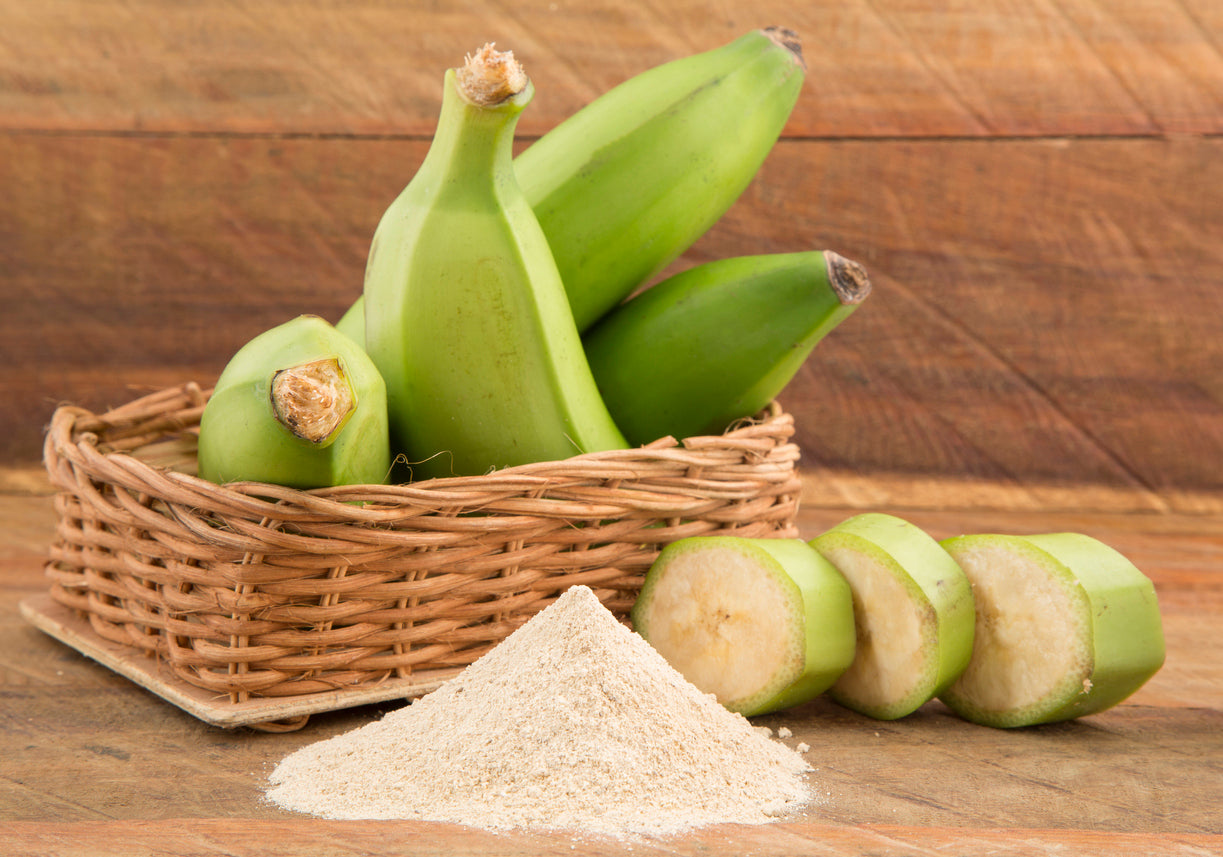The power of plantains – 3 top health benefits

At first glance, plantains resemble the yellow Cavendish bananas popular in the United States. In fact, they are sometimes referred to as “cooking bananas,” while their sweeter, thinner-skinned relatives are known as “dessert bananas.” But, while plantains are related to Cavendish bananas, they are not interchangeable with them – and have unique properties and health benefits all their own.
An important dietary staple for millions of people worldwide, plantains are particularly popular in the Caribbean and Nigerian cuisine, where they are often served to accompany meat or fish. Inexpensive, versatile, and tasty, plantains are now gaining popularity in the United States as well. Let’s look at three of the most compelling health benefits of plantains.
Plantains are highly nutritious
If you’re looking for a side dish that is easy to digest, gluten-free, low-fat, and nutritious, say “hello” to plantains. A half-cup serving of cooked plantains contains a reasonable 122 calories – along with 32 grams of carbohydrates and 2 grams of fiber. (While plantains are undeniably high in carbohydrates, health experts point out that the carbs are of the complex variety – and are digested more slowly than simple carbs).
In addition, the same serving contains an impressive 487 mg of potassium, an important essential mineral, and electrolyte that helps to maintain stable heart rate and blood pressure. Plantains also contain many antioxidant compounds, which help to neutralize harmful free radicals. In fact, when it comes to antioxidants, you could say that plantains bring the “big guns.”
Scientific analysis has shown that they contain glutathione - the body’s most important antioxidant and detoxifying enzyme - along with a natural plant pigment known as lycopene. Also found in tomatoes, watermelon, and guavas, lycopene is important for heart health and blood sugar control. Finally, plantains contribute the antioxidant vitamins C and A.
Resistant starches in plantains benefit digestion, gut health, and weight control
The key to plantain’s health-sustaining power is its content of resistant starch which can’t be digested. While this sounds at first like a drawback, it is actually a big “plus.” In a 2019 study published in Current Opinions in Biotechnology, the scientists reported that resistant starch in plantains could improve the gut microbiome or community of bacteria in the digestive tract. Resistant starch is converted in the large intestine to short-chain fatty acids (SCFAs) such as butyrate, which nourishes beneficial gut bacteria. (Because of this attribute, plantains are classified as a prebiotic food).
In addition, plantain fiber has been shown in studies to effectively block intestinal pathogens from attaching to the gut lining. Worth noting: The fiber in plantains can also promote healthy elimination and prevent uncomfortable constipation and hemorrhoids. Finally, the fiber in plantains can promote healthy weight by creating a feeling of fullness that may help prevent snacking later in the day. Incidentally, other good sources of resistant starch include onions, green bananas, and Jerusalem artichokes.
Plantains may boost mood
It’s hard to say whether it’s the sunny yellow color of cooked plantains, their easy digestibility, or their mild flavor that makes them such a “grounding” dish. But the fact remains: aficionados swear by the ability of plantain to serve as comfort food. It turns out there may be some scientific support for this belief.
Researchers say that plantains contain compounds known as biogenic amines, which support the production of “feel-good” neurotransmitters such as serotonin and dopamine. In light of the ability of plantains to support microbiome health - which has been linked with mood - it’s not such a leap to think that eating them may have mild uplifting and calming effects. So if you’re feeling stressed out, it may be worth your while to settle down with a plate of plantain.
Plantains are endlessly versatile in recipes
Depending on their state of ripeness, plantains may have green, yellow, or dark brown skin. The good news is: they can be cooked and enjoyed at any stage of ripeness - although riper plantains will be sweeter.
Plantains are often sliced thin, fried, and enjoyed like potato chips. However, they can also be prepared, baked, grilled, roasted, or boiled.
You can roast plantains drizzled with olive oil, chili powder, and lime juice - or mix them into scrambled eggs, frittatas or omelets. Plantains may also be sauteed with beef and red peppers used to enhance spicy black bean stew or chili, baked atop pizza, or used in tacos. And plantain flour can be used in breads, pancakes, and waffles.
Crammed with antioxidants, vitamins, minerals, and beneficial dietary fiber, plantains make an excellent addition to your healthy diet.
Sources for this article include:






